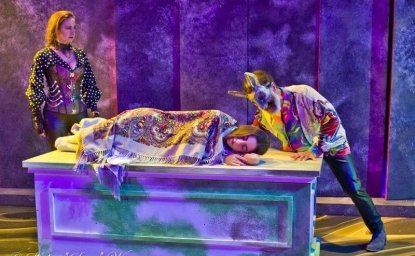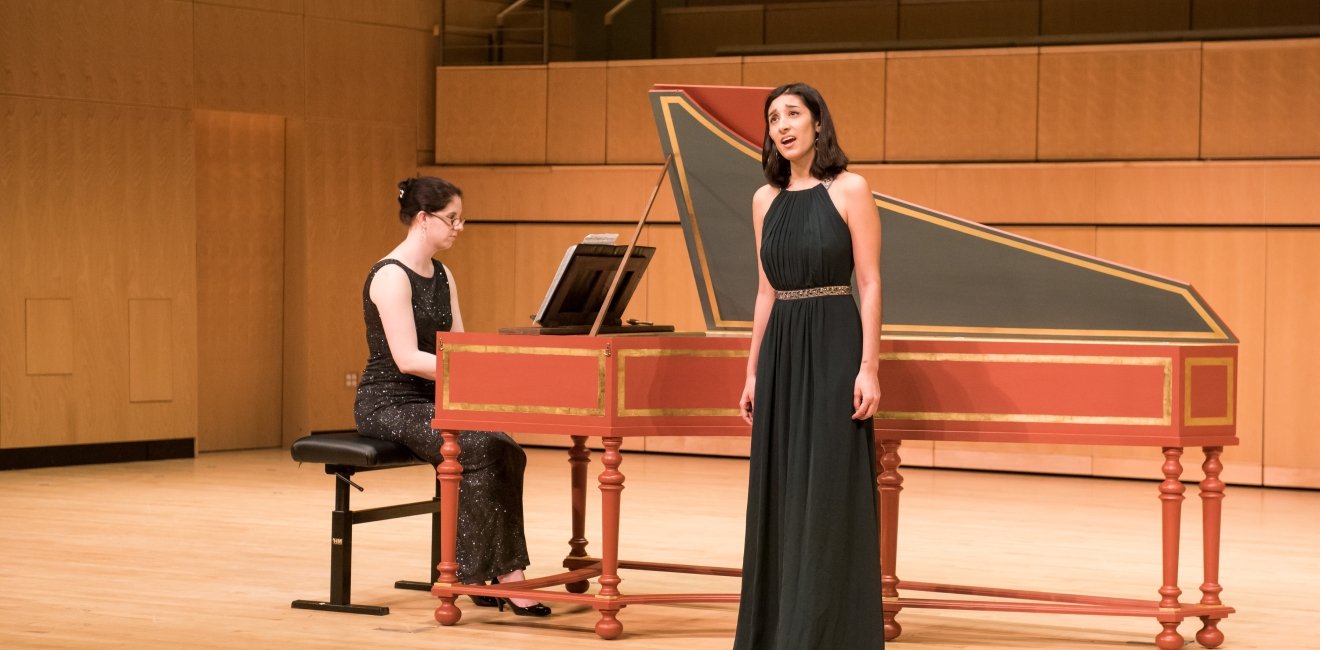On almost any given Sunday nine blocks west of the White House on Washington’s Pennsylvania Avenue, the parishioners of Saint Stephen Martyr Catholic Church are transported to thoughts of Heaven by the golden soprano voice of Cantor Grace Srinivasan. Srinivasan, who grew up in the Washington area, graduated with degrees in music from nearby George Washington University, and studied ballet, the cello, and, later, voice at Baltimore’s Peabody Conservatory.
Saint Stephen Martyr has a long and distinguished history. Founded in 1867, the parish’s sturdy brick sanctuary and school stood proudly over the city’s tumbledown Foggy Bottom neighborhood for nearly a century. Prominent local architect Adolf Cluss -- who had been the Best Man at Frederick Engels’ wedding prior to leaving Germany -- designed the church in a signature carnivalesque red-brick style that came to define much of Washington’s cityscape (among his surviving buildings are The Smithsonian’s Arts & Industry Building, Eastern Market, and the Franklin School). When structural damage proved too severe, the old church was replaced in 1959 by an elegantly Modernist sanctuary defined by a progression of liquefied parabolic vaults. The new Saint Stephen Matyr became the home church for President John F. Kennedy, whose favorite pew at the back of the sanctuary is memorialized by a bronze plaque.
Srinivasan has retained her connection with Saint Stephen Martyr from her college days even as her career has taken flight. In addition to recitals and stage appearances around the world, she played the lead role in the 2014 PBS docudrama Enemy of the Reich recounting the heroic story of Noor Inayat Khan, who aided the French Resistance during World War II and was killed in Dachau.
Srinivasan met Paula Maust while studying at Peabody Conservatory. An accomplished harpsichordist and organist, Maust has earned a multitude of degrees in early music and organ performance from Peabody, the Cleveland Institute of Music, and Valparaiso University. She has earned praise for her performances and has served as music director and organist at several churches around the country.
Srinivasan and Maust’s shared passion for early and Baroque music drew them together. They perform regularly around Baltimore and Washington and beyond with numerous groups and colleagues, and they promote their music through teaching and by encouraging new audiences to discover the music. Maust, for example, teaches at the University of Maryland Baltimore County and Towson University as well as taking on private students. Yet, they wanted to do more.
Last year, Srinivasan and Maust joined together to form Musica Spira (Music Breathes) dedicated to promoting Baroque music that captures “the essence of life’s stories” thereby making the music relevant to contemporary society. Together, they curate and perform programs touching on the trials of life in the twenty-first century through the music of the seventeenth and eighteenth centuries.
One such program featuring the music of women composers is entitled “Shattering the Glass Ceiling: Women Who Defied the Odds.” Another, entitled “In Pursuit of Fidelity,” explores the meaning of trust through the music of Henry Purcell, Peter Philips, Thomas-Louis Bourgeois, Joseph-Nicolas-Pancrace Royer and Domenico Scarlatti. Concluding with Scarlatti’s “rage aria,” “Fille, gia piu non parlo,” their performances humanize a music that might otherwise seem distant from contemporary society and life.
When collaborating as Musica Spira, Srinivasan and Maust draw musical traditions of the past and present into renewed conversations about the importance of life and values. Working in partnership to develop uncommon programs, they highlight shared themes which reach across centuries of seeming difference.
Together and with other musicians in a variety of venues and events ranging from pop up concerts in public spaces to formal recitals at esteemed institutions, Srinivasan and Maust enjoy diverse and elevating careers as performers and teachers. Their successes extend beyond promoting their own considerable talents to redefining the masterful music of the European Enlightenment for new audiences. In doing so, they are building new communities of followers who, in turn, revivify the legacy of the past.
Artistic Visionaries and Community Creators
The power of the performing arts to nurture inclusive communities has been praised widely in recent years; so much so that “creative placemaking” is now seen as a powerful tool in community development. The supportive role of community in fostering artistic innovation is less acknowledged. This series highlights the work of visionaries for whom creating communities of students, protégés, audiences, and donors has become a strategic element in transforming their arts.
Author

Former Wilson Center Vice President for Programs (2014-2017); Director of the Comparative Urban Studies Program/Urban Sustainability Laboratory (1992-2017); Director of the Kennan Institute for Advanced Russian Studies (1989-2012) and Director of the Program on Global Sustainability and Resilience (2012-2014)

Urban Sustainability Laboratory
Since 1991, the Urban Sustainability Laboratory has advanced solutions to urban challenges—such as poverty, exclusion, insecurity, and environmental degradation—by promoting evidence-based research to support sustainable, equitable and peaceful cities. Read more

Explore More in Artistic Visionaries and Community Creators
Browse Artistic Visionaries and Community Creators
Mark and Susan Marie Rhea and Irish Theater

Hugo and Rebecca Medrano and Hispanic Theater

Andrew Kingsley, Andrew Vaught and Social Impact Theater


